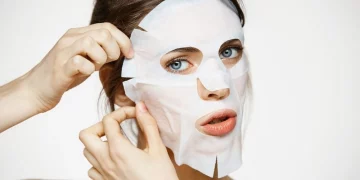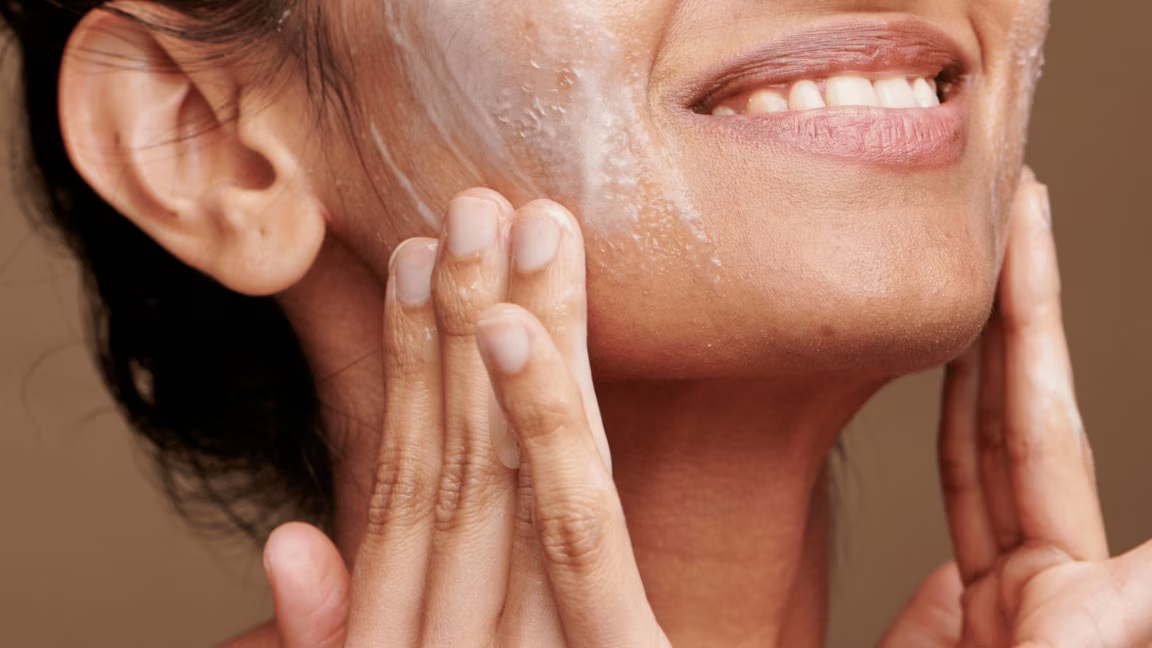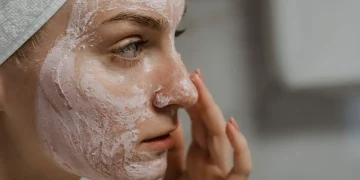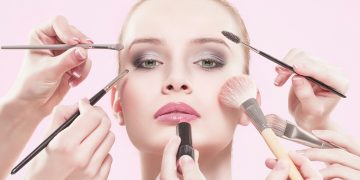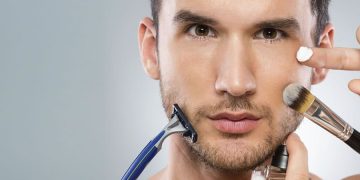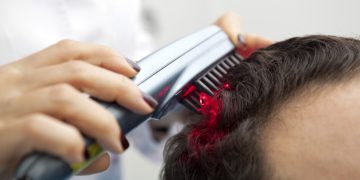Introduction
In the ever-evolving world of beauty, the demand for flawless, youthful skin has led to an array of skincare solutions, from simple at-home beauty devices to more advanced, professional aesthetic treatments. With the rise of home beauty devices such as facial massagers, LED masks, microcurrent tools, and derma rollers, many people are wondering: Can these at-home tools really replace professional aesthetic treatments offered by dermatologists, plastic surgeons, and licensed aestheticians?
At-home beauty devices promise convenience, affordability, and the luxury of maintaining a skincare routine from the comfort of your own home. Professional treatments, on the other hand, tend to be more expensive but offer results that are often more immediate and noticeable. But which option provides the best results? Are home devices truly capable of delivering similar outcomes as professional procedures?
In this article, we will explore the pros and cons of at-home beauty devices and professional aesthetic treatments, analyze their effectiveness, and determine if daily at-home care can truly replace the need for professional treatments.
1. The Rise of At-Home Beauty Devices
In recent years, at-home beauty devices have grown significantly in popularity, thanks to their ease of use and the ability to provide targeted treatments that many people once could only receive in a clinical setting. These devices cover a range of concerns, including skin aging, acne, pigmentation, and uneven skin texture.
a. Common At-Home Beauty Devices
- LED Therapy Masks and Devices: LED (light-emitting diode) masks and handheld devices are designed to emit light at different wavelengths, which are believed to stimulate various skin benefits. Blue light is often used for acne treatment, while red light is associated with anti-aging effects, such as reducing fine lines and improving skin texture.
- Microcurrent Devices: Microcurrent technology uses low-level electrical currents to stimulate facial muscles, promoting lifting and toning. These devices are often marketed as a way to reduce the appearance of sagging skin and improve contour, similar to the effects of a facial lift.
- Facial Massagers: Tools such as jade rollers and gua sha stones have been used for centuries in traditional Chinese medicine to promote circulation, reduce puffiness, and enhance lymphatic drainage. More modern electric facial massagers offer a similar experience with the added benefit of vibration or heat to boost blood flow.
- Dermarollers (Microneedling): Dermarollers have become a popular tool for at-home microneedling, a technique that involves rolling tiny needles over the skin to stimulate collagen production and improve skin texture. Professional-grade microneedling procedures are typically more intense and effective, but at-home versions offer a milder option.
- Laser and IPL (Intense Pulsed Light) Devices: Some at-home devices offer light-based treatments similar to those used in professional clinics, such as hair removal, skin rejuvenation, or treatment of pigmentation. These devices use lower energy levels compared to their professional counterparts but claim to provide similar results with consistent use.
2. The Power of Professional Aesthetic Treatments
Professional aesthetic treatments have long been the go-to solutions for more serious or advanced skin concerns, thanks to their higher intensity, precision, and immediate results. Clinics and dermatology offices offer a wide variety of treatments that are not available through at-home devices, including chemical peels, laser resurfacing, botox, and more.
a. Common Professional Aesthetic Treatments
- Laser Resurfacing: Professional laser treatments use high-powered lasers to target skin layers and stimulate collagen production, reduce wrinkles, and even out skin tone. Procedures like CO2 lasers or fractional lasers are effective for reducing fine lines, scars, and pigmentation.
- Botox and Fillers: Injectables such as botulinum toxin (Botox) and dermal fillers offer immediate results for reducing the appearance of wrinkles and volumizing areas of the face, such as the cheeks or under-eye hollows. These treatments are typically more targeted and provide more significant outcomes than at-home devices.
- Chemical Peels: Chemical peels involve applying an acid solution to the skin to exfoliate the top layers and improve the appearance of acne scars, hyperpigmentation, and fine lines. Stronger chemical peels, such as TCA or glycolic acid peels, offer more dramatic improvements than at-home exfoliation methods.
- Microneedling (Professional Grade): While at-home dermarollers offer a milder form of microneedling, professional-grade microneedling (often performed with a Dermapen) can go deeper into the skin, stimulating more collagen production and improving skin texture more significantly.
- IPL Treatments: Intense Pulsed Light (IPL) is used in professional clinics for various skin issues, such as sun spots, rosacea, and acne. The treatment works by delivering broad-spectrum light to the skin, which is absorbed by melanin or blood vessels, offering targeted results in a way that home devices can’t replicate.
3. Comparing the Effectiveness: At-Home vs. Professional Treatments
a. Results and Efficacy
- At-Home Beauty Devices: At-home devices offer gradual results over time with consistent use. While they are effective for maintaining skin health, improving circulation, and addressing mild concerns such as dullness or light acne, they typically don’t provide the same immediate or dramatic results that professional treatments can deliver. Devices like microcurrent tools, LED masks, and dermarollers can certainly help reduce fine lines, improve skin texture, and boost radiance, but the results are usually subtle and take time.
- Professional Treatments: In contrast, professional treatments tend to provide faster, more noticeable results. For instance, botox can smooth wrinkles instantly, chemical peels can dramatically improve skin texture in just a few sessions, and laser treatments offer significant skin resurfacing with minimal downtime. These treatments also tend to work deeper within the skin, delivering longer-lasting and more visible improvements.
b. Safety and Risk
- At-Home Beauty Devices: Most at-home beauty devices are generally safe when used as directed, but misuse or overuse can lead to skin irritation, burns, or infection. For example, using a dermaroller with excessive pressure or too frequently can cause micro-tears in the skin, leading to inflammation and potential scarring. It is important to follow instructions carefully and avoid using devices if you have active skin conditions such as eczema or rosacea.
- Professional Treatments: Professional treatments are typically performed by licensed practitioners who are trained to understand skin anatomy and ensure safety. While these treatments can carry some risks, such as swelling, bruising, or allergic reactions, they are usually done under medical supervision, and the practitioner can address any complications promptly. Treatments like Botox and fillers also tend to offer immediate results with little to no downtime when performed correctly.
c. Cost and Accessibility
- At-Home Beauty Devices: One of the biggest advantages of at-home devices is their affordability. After the initial purchase, they can be used repeatedly with minimal ongoing costs. For those on a budget or those who prefer a more convenient, flexible skincare routine, at-home devices offer an accessible way to maintain healthy skin without needing to book regular appointments or undergo invasive procedures.
- Professional Treatments: Professional aesthetic treatments are generally more expensive, with each session potentially costing hundreds or even thousands of dollars, depending on the procedure. Moreover, treatments often require multiple sessions for optimal results, and they may not be as accessible due to factors like location and availability of skilled professionals.
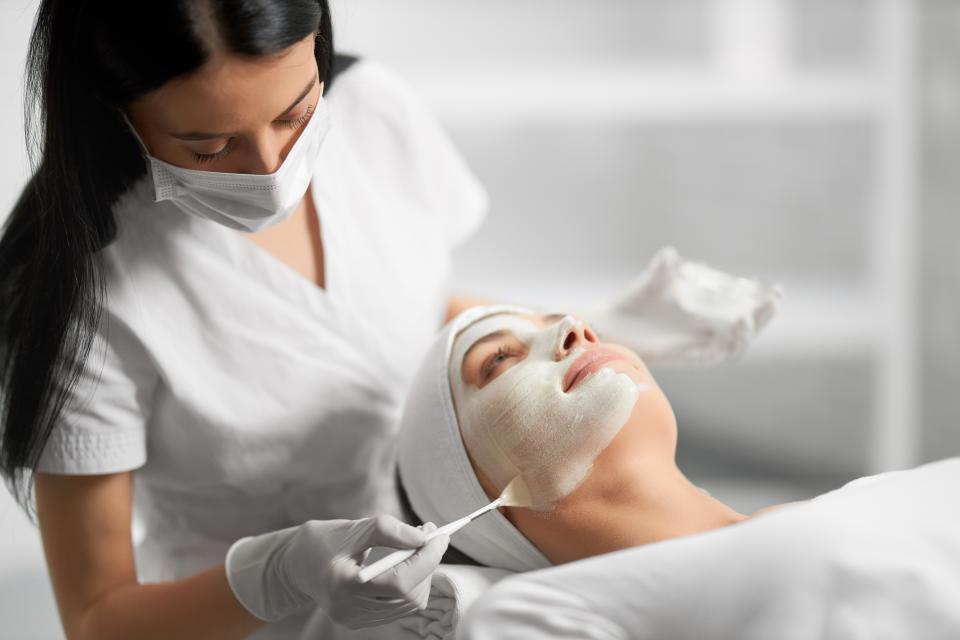
4. Can Daily At-Home Care Replace Professional Procedures?
While at-home beauty devices are a great tool for maintaining and improving skin health, they generally cannot replace the more intense, targeted effects of professional treatments. Here’s why:
- Gradual vs. Immediate Results: At-home devices work gradually and can certainly enhance the skin over time, but for more dramatic changes or targeted solutions for concerns like deep wrinkles, sagging skin, or scarring, professional treatments are far more effective and provide quicker, more noticeable results.
- Targeted Treatments: Professional treatments are specifically designed to address deeper layers of skin, tackle advanced skin conditions, and provide immediate results, which at-home devices cannot replicate. Procedures like botox, fillers, and laser resurfacing often offer benefits that cannot be achieved with over-the-counter products or devices.
- Maintenance vs. Transformation: Think of at-home devices as tools for maintenance, while professional treatments are more geared toward transformation. The best approach is often a combination of both: using at-home devices for daily skincare and visiting a professional for more advanced treatments when needed.
5. Conclusion
Both at-home beauty devices and professional aesthetic treatments have their place in a comprehensive skincare routine, but they serve different purposes. At-home devices can provide valuable support for maintaining skin health, addressing mild concerns, and enhancing radiance. However, for more advanced or serious skin issues, professional treatments remain the gold standard.
In reality, the best results often come from a combination of the two. Daily at-home care can supplement the effects of professional treatments, helping to maintain the results and keep the skin in optimal condition between visits. Therefore, while at-home devices can’t entirely replace professional procedures, they can complement them, allowing you to enjoy the benefits of both worlds.


